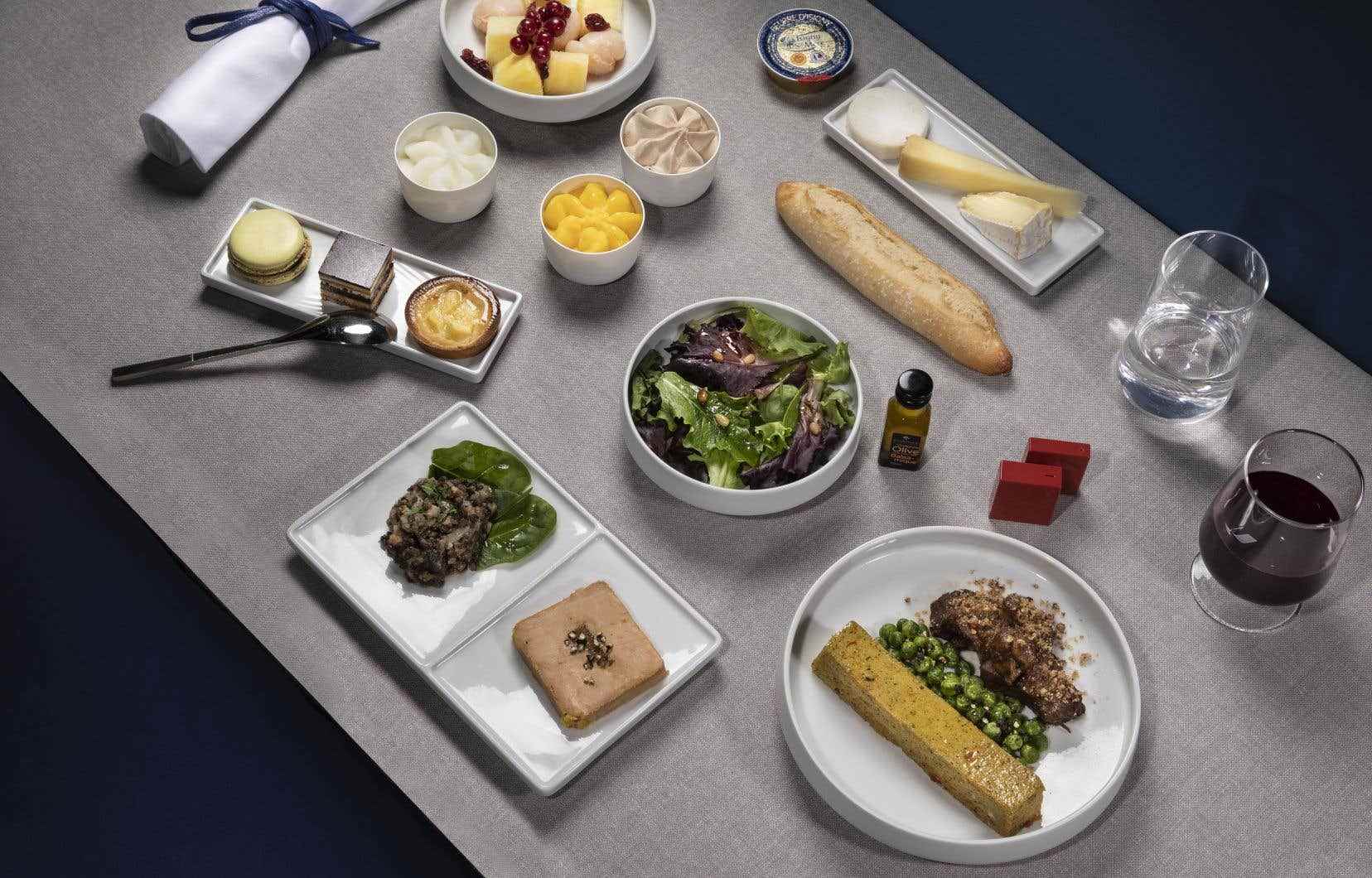This text is part of the special book Plaisirs
Five new chefs based in different destinations served by the French airline are now busy in the kitchen, including the executive chef of the Renoir restaurant at the Sofitel Montreal Le Carré Doré. On this occasion, we wanted to know how the dishes that are served on board the planes are prepared. With this question that burns all our lips: can we really eat well on board an airplane?
Met in Lyon, on the occasion of the Bocuse d’Or, a prestigious gastronomic competition where chefs from all over the world compete, Olivier Perret said he was honored, inspired and a little intimidated at the same time to find himself among so many stars. He is now one of the 17 international chefs – alongside big names such as Arnaud Lallement, Régis Marcon, Anne-Sophie Pic, Emmanuel Renaut and Michel Roth – who sign first class, business class meals this year. and Air France Roissy–Charles-de-Gaulle and Orly airport lounges. Starting this spring, his creations can be savored in business class on board flights departing from Montreal, Toronto and Vancouver all year round, as well as from Quebec City and Ottawa during the summer. It had just started testing when we met in January.
His challenge: to offer business class passengers local flavors. “The idea is to respect as much as possible the local cuisine, the products of Quebec and Canada and to put them forward, explains the chef of Burgundian origin. I’m a maple ambassador, so that’s also an asset. »
“Building a recipe that will work on board an airplane is not the same as in a restaurant, underlines Fabien Pelous, director of customer experience at Air France. There are several constraints on the string. There are things that work and others that don’t, budgetary constraints, so don’t be afraid to say so. It’s not the same budget as in a restaurant. »
It is thanks to Fabien Pelous, former regional general manager of Air France in Canada and regular at the Renoir, that Olivier Perret will sign the dishes on departure from Canadian destinations this spring. Among the airline’s requests: include poultry and a vegetarian dish. “I’m going to try to work on guinea fowl, duck parmentier, poultry in a crust… For the vegetable dish, I think I’ll try barley. You can make wonderful lemon-root recipes. […] We’re doing some testing, so it’s not final. »
The chef’s challenge
The work is done in close collaboration with the Servair caterer team, world leader in airline catering, and its culinary studio, directed by chef François Adamski. Not only are tastes altered by altitude and pressurization, but the appearance of dishes can also be affected by the steps taken between the galley and the passenger tray. “We are in deferred catering, summarizes Mr. Adamski. We are making. Then, for the Business, we prepare and, afterwards, it is warmed up directly in the casserole dishes, in the airplane ovens. »
“The idea is to keep the gourmet side, to bring out this braised side, this heat that we love so much from a dish simmered in a casserole, explains the chef for his part. Julian Royer about his braised 36 hours accompanied by a celery puree. The mustard seeds will bring a little contrast. There is one thing you should know: when we are up there, our sense of taste is not the same as on the ground. So we try to bring textures and relief to dishes through acidity, vinegar, citrus, chilli or mustard. »
“The biggest challenge, says Anne-Sophie Pic, an Air France employee for ten years, is to make a dish where you don’t deny yourself. We will of course simplify, adapt to the constraints of meat, reheating and all those other things that matter too. […] The goal is not to simplify existing recipes, but to find the right balance between texture, appearance and taste and that they are also potentially easily reproducible. »
If we prefer foods to others because they better support the different stages – for example braised beef cheek with veal, which is drier -, some, such as offal, are outright banned. “It’s too divisive,” says Mr. Adamski. Cabbages are also avoided because of the smells during — and after! – the service.
Are airplane meals really saltier? No, says François Adamski. “We’re putting a little more power — not more salt, but we’re going to thicken the sauces of the meats, reduce them a little to bring in the power so that it’s better up there. External elements can also affect the taste of passengers in flight, in particular the stress of the trip.
Unique dishes
Servair works with around thirty airlines, but separate teams prepare the meals. Even in economy class, “no two airlines serve the same dish”, assures François Adamski.
In economy class, Air France always offers a starter, main course, cheese and dessert, as well as wine and champagne. “We try to keep this positioning of French gastronomy for all our classes, underlines Fabien Pelous. It is the symbol of France. At Roissy–Charles-de-Gaulle airport, Alain Ducasse and his teams designed the Air France La Première lounge menu, while Guy Martin designed the Paris-Orly one.
Vegetarian options
Our journalist was the guest of Air France, which had no say in this report.
This special content was produced by the Special Publications team of the Duty, pertaining to marketing. The drafting of Duty did not take part.
